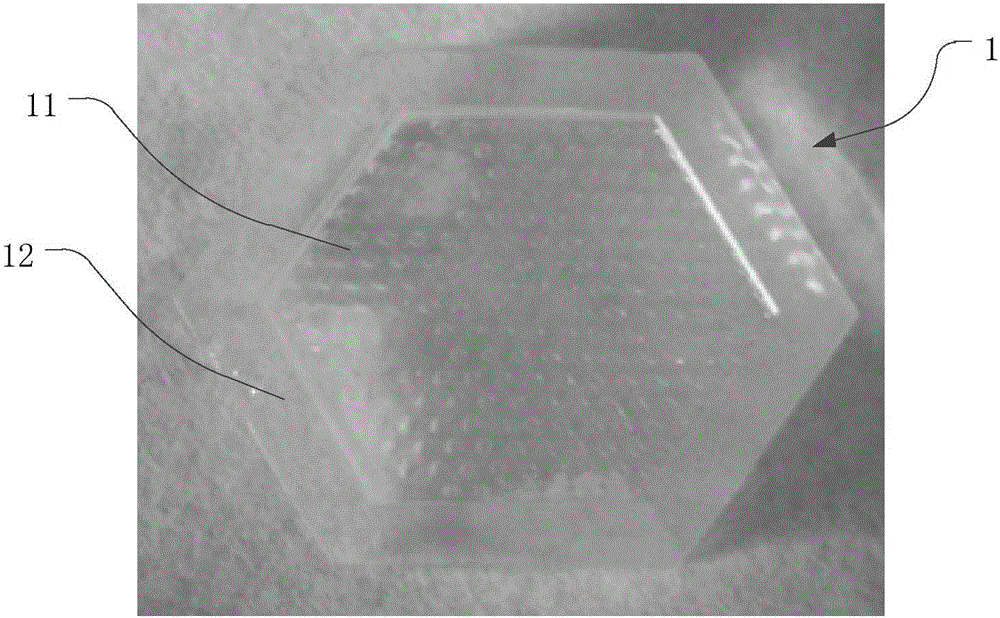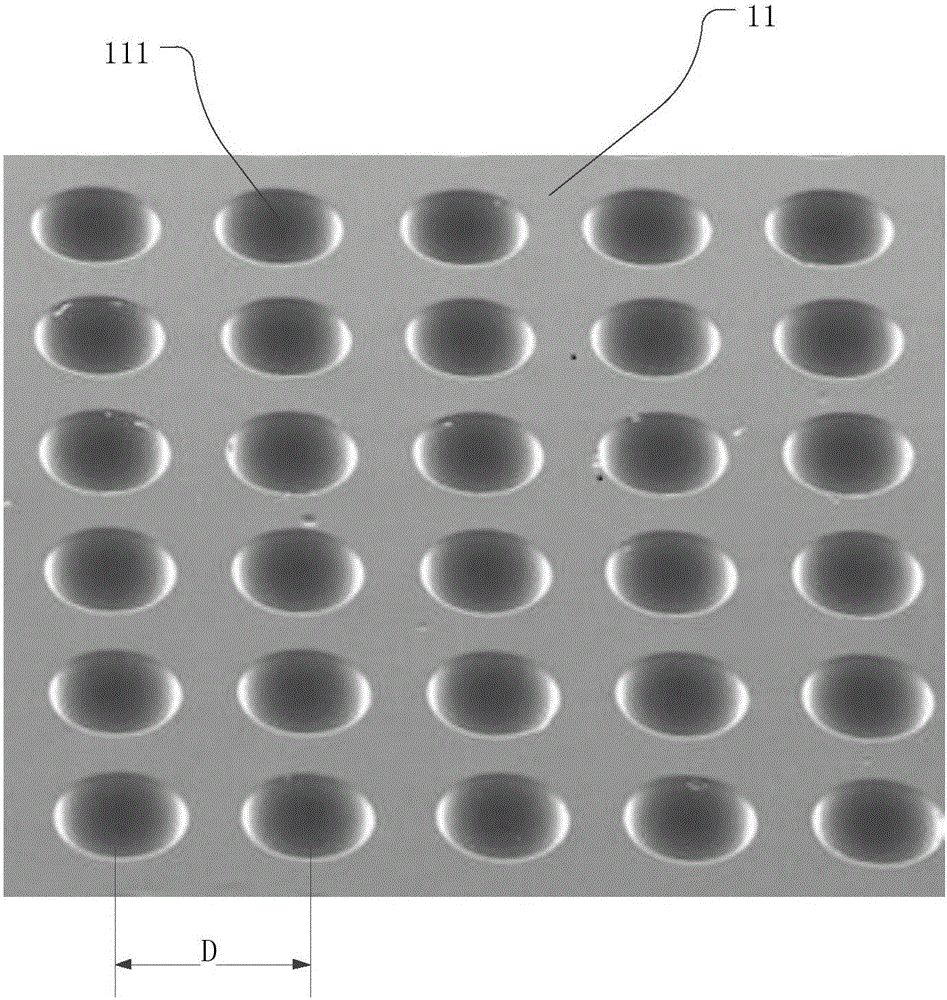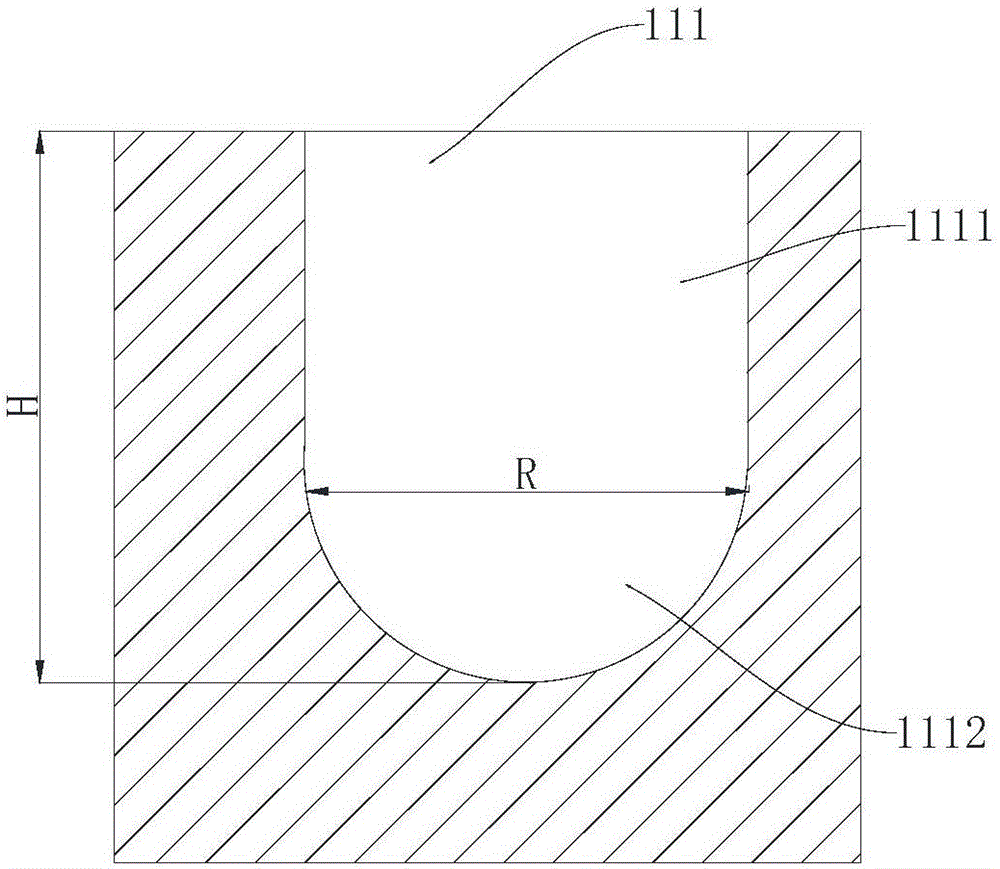In-vitro three-dimensional culture method for hepatic cell
A cell, three-dimensional technology, applied in the field of in vitro three-dimensional culture of hepatocytes, can solve the problems of long cell spheroidization time, complex procedures, and high cost of use, and achieve the effects of good biocompatibility, simplified workflow, and extended service life.
- Summary
- Abstract
- Description
- Claims
- Application Information
AI Technical Summary
Problems solved by technology
Method used
Image
Examples
Embodiment 1
[0060] cell culture medium
[0061] refer to figure 1 , the cell agglomerate culture matrix 1 of the present invention provides an outer matrix for exosome growth for animal cell culture, and the cell agglomerate matrix 1 comprises a culture area 11 and a fence 12 connected to the periphery of the culture area 11, the enclosure The end face of the baffle 12 is higher than the end face of the culture area 11 to ensure that a certain volume of culture fluid can be accommodated in the culture area 11 . Preferably, the culture area 11 and the enclosure 12 are integrally formed. Considering biocompatibility, the cell culture medium 1 is suitably prepared with agarose.
[0062] Further, refer to figure 2 , the culture area 11 is evenly distributed with several polysphere holes 111 for guiding the animal cells growing in the cell polysphere culture substrate 1 to form cell polyspheres, so as to form a three-dimensional structure similar to that in the case of in vivo growth.
[00...
Embodiment 2
[0066] Matrix mold
[0067] refer to Figure 4 , the matrix mold 2 of the present invention is used as a perfusion mold for the cell aggregation sphere culture matrix 1, and the matrix mold 2 includes a first template 21 and a second template 22 nested with each other to form a perfusion molding cavity.
[0068] The first template 21 includes a plate body, a boss 211 disposed inside and a groove 212 circumferentially disposed adjacent to the boss 211 . A number of bumps 213 are evenly distributed on the surface of the boss 211, which are used to correspondingly form aggregated ball holes 111 in the cell aggregated ball culture substrate 1, that is, the shape and size of the outer contour of the bumps 213 are the same as those of the cell aggregated ball culture substrate 1. The internal shape and size of the converging ball holes 111 are the same, and the bumps 213 serve as a positive mold of the converging ball holes 111 .
[0069] Specifically, refer to Figure 5 Each of ...
Embodiment 3
[0080] Physiological indicators of hepatocytes during polysphere culture
[0081] (1) Take human liver cancer cells HepG2, culture them in DMEM high-glucose medium containing 10% fetal bovine serum, penicillin (100u / ml), streptomycin (100u / ml) double antibodies, at 37°C, 5% CO2 , Cultured in an incubator with a relative humidity of 90%, and observed the growth of the cells regularly. Digest with 0.25% trypsin every 2 to 3 days for subculture. After passing to the 5th and 6th generations, take a 24-well plate mold size, inoculate 500 cells per hole in the mold, and culture continuously for 7 days, and measure the relationship between the cell diameter and the number of days of culture.
[0082] like Figure 7 As shown, the cells spread out on the first day of cell inoculation, and the diameter of non-agglomerated balls was measured by Image J software to be about 75um. As the number of days increases, the cells slowly move closer together from the scattered state, the diamet...
PUM
 Login to View More
Login to View More Abstract
Description
Claims
Application Information
 Login to View More
Login to View More - R&D
- Intellectual Property
- Life Sciences
- Materials
- Tech Scout
- Unparalleled Data Quality
- Higher Quality Content
- 60% Fewer Hallucinations
Browse by: Latest US Patents, China's latest patents, Technical Efficacy Thesaurus, Application Domain, Technology Topic, Popular Technical Reports.
© 2025 PatSnap. All rights reserved.Legal|Privacy policy|Modern Slavery Act Transparency Statement|Sitemap|About US| Contact US: help@patsnap.com



